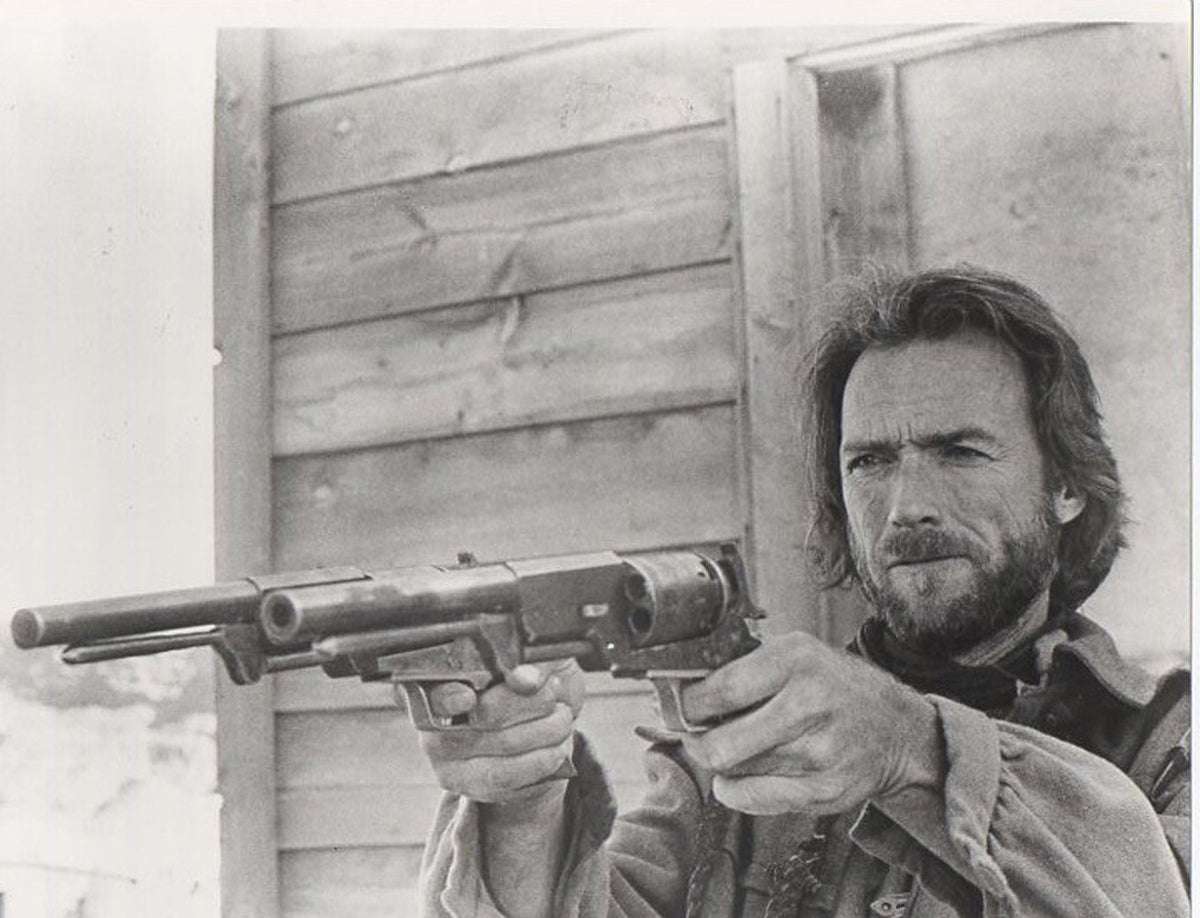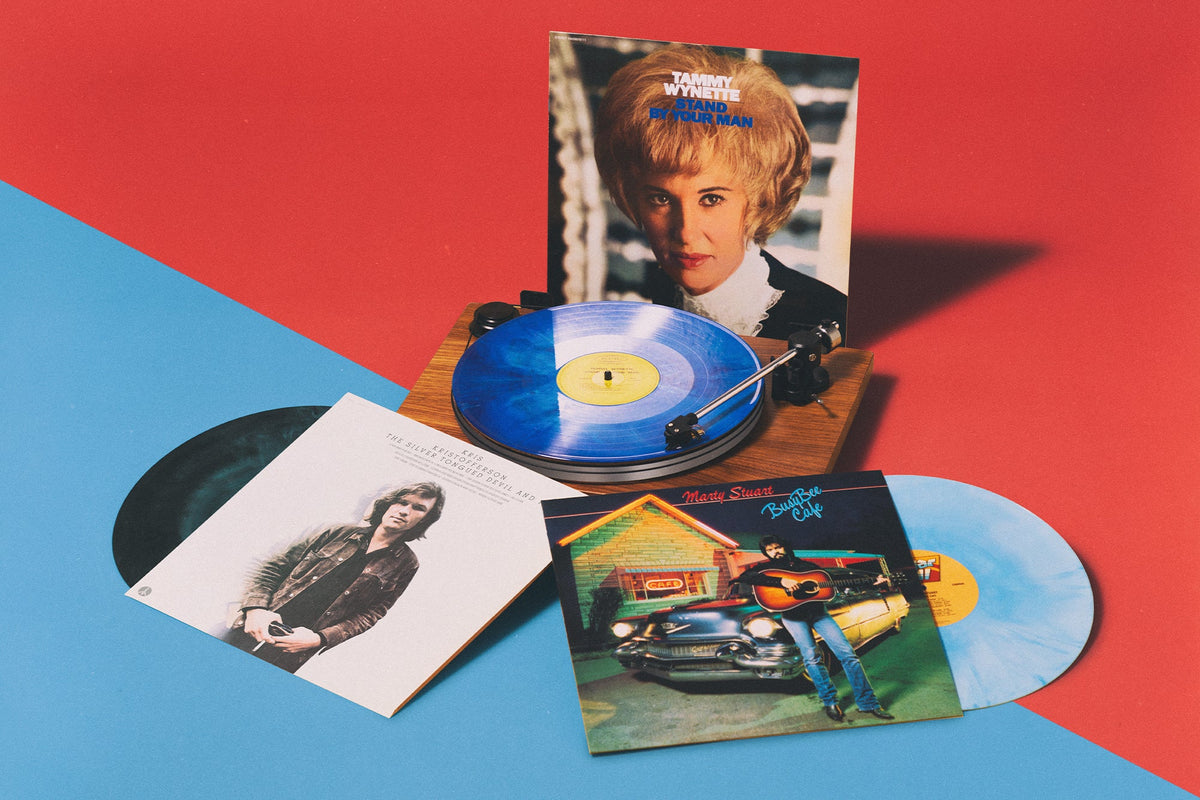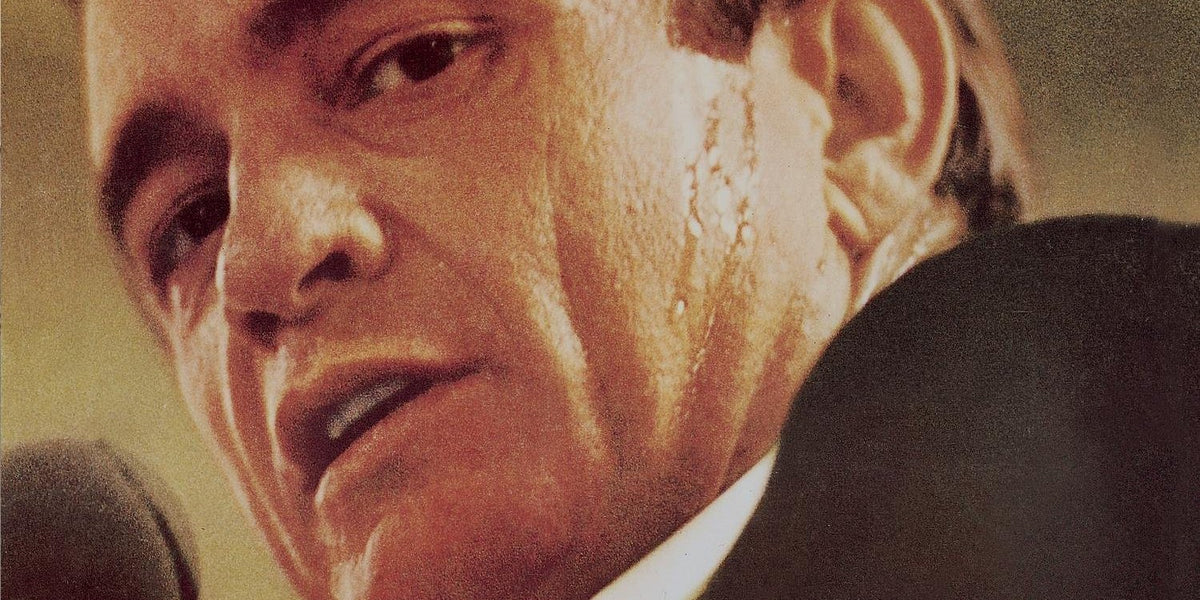On ‘The Silver Tongued Devil and I,’ a Country Star is Born
Kris Krisofferson’s second album made the country outsider a king of the genre
“All alone, all the way
On your own, who’s to say
That you’ve thrown it away for a song”
— Kris Kristofferson, “Breakdown (A Long Way From Home)”
“If they liked a mangy freak maybe they would love a mangy cowboy as well.”
— Willie Nelson
The story of the outlaw country revolution usually, in broad strokes, gets reduced to Waylon Jennings and Willie Nelson breaking Nashville’s mold, and steering country music into new aesthetic — you didn’t need to wear suits anymore! — and sonic — country could sound like rock! — vistas, two lone gunmen joining forces for a heist on Music City. That story isn’t false by any means, but it leaves out arguably the genre’s biggest outlaw, the man who took the biggest risks to pave the way for Waylon and Willie’s successful runs at the mountaintop. Waylon and Willie launched outlaw country from inside of Nashville’s hallowed halls, as two men who stopped crooning, grew out their hair and beards and stopped singing three-minute songs that, without the fiddles, could have been meant for Frank Sinatra.
Kris Kristofferson, however, was the true country outsider, a man who single-handedly pushed the genre leftward, changing forever the perception of its songwriters, its performers and its message. He was not signed to RCA working for Chet Atkins when he followed his own muse; he was a janitor cleaning up after Bob Dylan’s Nashville sessions, literally landing his helicopter — he flew to oil rigs in the Gulf of Mexico as his day job — on Johnny Cash’s lawn to try to convince him to record his songs. He was long-haired, anti-war and sang songs with drug use, sex and violence always lurking as dangers in the margins, at a time when Waylon and Willie were wearing sweaters and playing golf on their album covers. He was the outlaw, in a genre that would soon have people recording his songs, and co-opting his vision for a new version of country, to much greater financial success.
By the time Waylon was singing “Don’t You Think This Outlaw Bit's Done Got Out of Hand,” Kristofferson was a bona fide movie star, a sex symbol and one of the most famous people in America. In events that would be repeated by songwriting iconoclasts in country ever since, he quickly transcended country, his records considered “rock” even when he was making George Jones-esque divorce records in the early ’80s.
Which is to say, there is no outlaw country, no opening of country’s borders, no Waylon and Willie fighting for creative control if Kris Kristofferson doesn’t come along. His masterpiece sophomore album, The Silver Tongued Devil and I, being reissued on vinyl at VMP for the first time since the ’80s, should be lauded as one of the foundational texts of outlaw country on the Mount Rushmore of the genre, alongside At Folsom Prison, Red Headed Stranger and Honky Tonk Heroes. It’s an album made mostly by one man who started a revolution, a brown-haired canary singing in a coalmine that was ready to burst.
Kris Kristofferson’s upbringing and life before stardom add to his legendary mythos, to the point where many stories about him would feel like fabrications if they weren’t confirmed by him and people around him repeatedly. He grew up an Army and Air Force brat, moving around in his youth as his father made his way up the military ladder. It was assumed that Kris would follow his father into the family business, but things went sideways for him twice in his youth: first, when he discovered Hank Williams on the radio in California, and second when he discovered the poetry of William Blake. Those two seemingly disparate artists would form Kristofferson’s two poles of inspiration, but when you read Blake, you realize his dwelling in the dark side of existence is basically the 18th-century version of country music (read his poem “London” and tell me that’s not a country song).
After high school, he studied literature at Pomona College in California, eventually becoming a Rhodes Scholar at Oxford, where he studied Blake and started performing in earnest. For a brief period in the late ’50s, a manager in England convinced Kristofferson to perform some of his first songs in the style of Pat Boone — Kristofferson even changed his name the teenybopper-esque Kris Carson — a stunt that Kristofferson undertook solely to try to further what he thought would be his career as a novelist. Instead, the singles tanked, and it’d be a decade before Kristofferson would make his follow-up recordings.
After some years of discontent in the Army (serving at the same German base where Johnny Cash wrote “Folsom Prison Blues”), Kristofferson found himself in Nashville, with a young family at home in California, trying to ply his trade as a songwriter. His family more or less disowned him in this era — they wanted him to live the guaranteed life of a soldier, like his father and grandfather had — but Kristofferson was undeterred, working any job that put him close to the action in Nashville. In addition to being a bartender at a bar frequented by Willie Nelson and Waylon Jennings, his main job was as a janitor/gofer at Columbia Studios in Nashville for under $60 a week. His first three days at Columbia happened to coincide with the final three days of Bob Dylan’s Blonde on Blonde sessions, where he got to see the poet laureate of the ’60s work on his masterpiece. He’d later allegedly hold bongos for the drummer on Nashville Skyline, but the bigger moment for Kristofferson was running into, repeatedly, Johnny and June Carter Cash, who also used Columbia Studios. Cash would be Kristofferson’s entree into mainstream country, but not for a few years. Kristofferson would repeatedly try to pass Johnny demos via June, unsure of if the Man in Black himself had ever heard any of them. At this point, Kristofferson started flying supply runs to oil rigs in the Gulf of Mexico as his day job, since it paid a lot better than holding bongos and sweeping studios.
In 1968, as a helicopter pilot, Kristofferson had a songwriting breakthrough, writing the first batch of songs that would be hits for other artists. “For the Good Times,” a song Ray Price took to No. 1, was first, and “Help Me Make It Through the Night,” a No. 1 hit for Sammi Smith, was next. Then Kristofferson wrote “Sunday Mornin’ Comin’ Down,” a hit for Johnny Cash that Kristofferson might have passed Cash during the confirmed helicopter gate crash, when he landed his chopper on Cash’s lawn to hand him some demos.
By late 1969, Kristofferson was a regular on Johnny Cash’s variety show on national television, and had finally gotten signed as a solo artist to the Monument label, a mostly folk record label that also was the original home of Dolly Parton (another person whose outlaw bona fides aren’t always acknowledged!) and the launching pad for Roy Orbison. In 1970, Kristofferson released his debut, Kristofferson, an album chock full of his songs for other, bigger artists, including the song that will ultimately be his most remembered, another written during his breakthrough on the oil rigs: “Me and Bobby McGee.”
Originally appearing on Kristofferson, the song wouldn’t enter infamy until 1971, when it was Janis Joplin’s first posthumous single, and inarguably her biggest song. She took Kristofferson’s stark, sad song and willed it into a tsunami through her vocal performance. By the time Joplin’s version took over the world and hit No. 1 on the pop charts, Kristofferson’s fortunes had changed entirely. Thanks to his songs becoming hits for other artists, he won Song of the Year at the CMA’s in 1970 thanks to “Sunday Mornin’ Comin’ Down” and was celebrated as Nashville’s best songwriting talent. His songs would start featuring heavily on Waylon Jennings albums (his The Taker/Tulsa especially is a paean to Kristofferson), and everyone from Jerry Lee Lewis to Patti Page started covering his songs, despite him being outwardly what every Nashville country music establishment figure was publicly against. His appearances at the CMA Awards were rife with controversy — many people claimed he was stoned for them, an outrage in Nashville at the time, though Kristofferson says he never smoked weed — and his seeming unwillingness to play to the suits who ran the CMAs and other awards shows (where Kristofferson also cleaned up) made him a radical on the fringes who somehow was gatecrashing the country industry.
While his breakthrough into country music was happening, Kristofferson was working on his sophomore album, The Silver Tongued Devil and I. He knew he had everyone’s attention, and the onus was on him to make his masterpiece. Everything from the song selection — a mix between hits for other artists he wrote from 1968-1971, and new songs just for him — to the album cover — he was captured in run-down clothes with bleary eyes, long hair and a cigarette, basically the inverse of what, say, George Jones albums looked like in 1971 — were perfect down to their finest detail, poised to launch Kristofferson to mega stardom without compromising anything.
Silver Tongued Devil opens with its title track, a rambling country ballad that captures Kristofferson at his peak; it’s funny, poignant and has at its center the ethical quandary of whether to give into your base urges. Over barroom piano and a floating backing chorus that sounds like it could be Elvis Presley’s Jordanaires, Kristofferson sings of paying his own dues, and of knowing he was pushing his romantic conquests to their own dark sides. It’s not as dark as that sounds; listen to Kristofferson crack himself up as he leans into the devil persona, and takes an extra long pause before the song’s final chorus.
The album continues with “Jody and the Kid,” a song originally performed by Roy Drusky as a schmaltzy waltz in 1968, but rendered here as the western swing ballad of love and loss it was all along. “Billy Dee” tells the story of a rogue who lived too fast and died far too young thanks to drugs, and “Good Christian Soldier,” a song written by up-and-coming outlaws Billy Joe Shaver and Bobby Bare, started Kristofferson’s trend — which was later also a feature of Willie Nelson records — of recording songs by up-and-coming songwriters he admired. Side one ends with “Breakdown (A Long Way From Home),” as autobiographical an impressionist writer like Kristofferson ever got. Imagining life as the itinerant songwriter, Kristofferson looks back at “the long way” he’s come since he arrived in Nashville in 1965, and wonders if his songs are all he has. “You’ve still got the same lonely songs to remind you / Of someone you seemed to be, so long ago,” he sings over a plucked guitar figure.
For an album that spiritually kicked off the ’70s outlaw country movement, Silver Tongued Devil doesn’t sound radical; Kristofferson was less concerned with trying to match the energy of rock than Waylon and Willie, and more concerned with breaking open the constraints of Nashville’s subject matter. So when a flute opens the best song on Silver Tongued Devil and I, the devastatingly beautiful “Loving Her Was Easier (Than Anything I’ll Ever Do Again)” or when “The Taker” culminates in a horn section and an uncredited Joan Baez singing backup, it’s as surprising as listening to Waylon’s pre-1971 albums, or any Willie album before Yesterday’s Wine.
But for the album’s last three songs, Kristofferson goes full cowboy around a campfire, singing of a lost love on “When I Loved Her,” and shouting out all his Nashville songwriter pals on “The Pilgrim, Chapter 33.” The album’s last song, and most emotionally wrenching, was written in an afternoon following Kristofferson finding out Janis Joplin had died. Kristofferson hadn’t yet heard Joplin’s take of “Me and Bobby McGee,” but he and Joplin had briefly dated, and her death clearly hit him hard, as “Epitaph (Black and Blue)” discusses the complicity of everyone who knew of Joplin’s struggles with substances leading up to her death. “But when she was dying / Lord, we let her down / There’s no use cryin’ / It can’t help her now,” Kristofferson sings over spare organ, his voice cracking with emotion, as virtuosic in its sparseness as his complex songwriting earlier on the album.
Thanks to Joplin’s “Me and Bobby McGee,” and Kristofferson’s accolades — and thanks to Waylon Jennings having his own breakthrough, creatively and commercially, thanks to The Taker/Tulsa, an album filled with Kristofferson songs — The Silver Tongued Devil and I was an immediate smash, and Kristofferson’s most successful album. It went to No. 5 on the Country charts, and the Top 30 on the Billboard Album charts, and immediately made Kristofferson a superstar, not just in the country realm. He was arguably the first country performer to transcend Nashville — followed later by Waylon, and Willie, and Dolly, too — and become a recognizable face to people who never listened to a Hank Williams song. Thanks to a friendship with Dennis Hopper, Kristofferson also pivoted to acting in the early ’70s, becoming a genuine movie star, as his rugged good looks were perfect on film and on posters alongside stars like Barbra Streisand (they co-starred in the first remake of A Star is Born).
His songwriting career took a back seat by necessity to make way for Hollywood stardom, but basically every album he released on Monument is on the spectrum between total classic (Jesus Was a Capricorn) and unfairly forgotten masterpiece (the divorce album To The Bone). His most successful albums after The Silver Tongued Devil were albums he made with his wife Rita Coolidge (Full Moon is a stunner) and the Highwaymen supergroup with Willie, Waylon and Johnny Cash. He received a Lifetime Achievement Award from the Grammys in 2014, and the CMAs — the same organization that was skeptical of him in the ’60s and ’70s — in 2019. Some outlaws eventually become the mainstream, somehow willing the norm to the left-of-center, and Kristofferson, after all these years, somehow had. A process that happened thanks to The Silver Tongued Devil and I.
Research and Willie Nelson epigraph quote sourced from ‘Kristofferson: The Wild American’ by Stephen Miller and ‘Outlaw: Waylon, Willie, Kris and the Renegades of Nashville’ by Michael Streissguth.
Andrew Winistorfer is Senior Director of Music and Editorial at Vinyl Me, Please, and a writer and editor of their books, 100 Albums You Need in Your Collection and The Best Record Stores in the United States. He’s written Listening Notes for more than 30 VMP releases, co-produced multiple VMP Anthologies, and executive produced the VMP Anthologies The Story of Vanguard, The Story of Willie Nelson, Miles Davis: The Electric Years and The Story of Waylon Jennings. He lives in Saint Paul, Minnesota.
Related Articles
Join the Club!
Join Now, Starting at $36Pages







